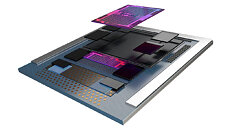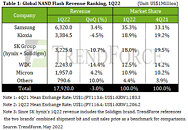US Might Reimpose GPU Import Tariffs in the New Year
Currently, the US has an exclusion in place when it comes to import tariffs relating to graphics cards and GPUs imported from China, but the exclusion is set to expire on the 31st of December this year. So far, the US government has been quiet on whether or not the import tariff will be reinstated or not. If the tariff was to be reinstated, US consumers are looking at a 25 percent import duty on graphics cards, starting on the 1st of January, 2023.
There's no easy way to circumvent the tariff either, as it includes items like "printed circuit assemblies, constituting unfinished logic boards," according to Tom's Hardware. Not all graphics cards are made in China though, but the majority of graphics cards are today. It's possible that NVIDIA's move of its logistics center from Hong Kong to Taiwan could have some relation to this as well, as NVIDIA would then be shipping products out of Taiwan, rather than China, depending on how the US Customs classifies Hong Kong these days. We should know what happens in a month's time, but a 25 percent import duty on graphics cards will likely kill most sales, as most people already find them overpriced. This would of course affect AMD and NVIDIA, as well as their partners in the same way, unless they make their graphics cards outside of China.
There's no easy way to circumvent the tariff either, as it includes items like "printed circuit assemblies, constituting unfinished logic boards," according to Tom's Hardware. Not all graphics cards are made in China though, but the majority of graphics cards are today. It's possible that NVIDIA's move of its logistics center from Hong Kong to Taiwan could have some relation to this as well, as NVIDIA would then be shipping products out of Taiwan, rather than China, depending on how the US Customs classifies Hong Kong these days. We should know what happens in a month's time, but a 25 percent import duty on graphics cards will likely kill most sales, as most people already find them overpriced. This would of course affect AMD and NVIDIA, as well as their partners in the same way, unless they make their graphics cards outside of China.






































